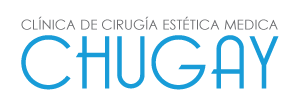Brow Lift Surgery
A forehead lift or “brow lift” is a procedure that restores a more youthful, refreshed look to the area above the eyes. The procedure corrects drooping brows and improves the horizontal lines and furrows that can make a person appear angry, sad or tired. Dr. Chugay utilizes two distinct techniques of forehead lifting: Coronal and Endoscopic.
Coronal Lift
In the Coronal Forehead Lift, Dr. Chugay begins as he makes an incision starting at or near the ear and running across the top of your head slightly behind your hairline. The forehead skin is lifted up and excess skin is reduced, sometimes with part or all of the muscles that cause forehead tension and wrinkling. Dr. Chugay uses blunt dissection to free up the tissues. While using sharp cutting instruments to free up the forehead skin is faster, blunt dissection is much safer for the patient and will result in less bleeding, less risk of nerve and tissue damage, lower risk of hematoma, and faster healing and recovery.
Dr. Chugay uses subcuticular (just below the level of the skin) sutures for the final closure of the incision after the surgery. This technique is time consuming and difficult to execute; however, it leaves a more natural and aesthetically pleasing final result. A vast majority of surgeons continue using removable sutures, which leave hash marks and increase hair loss.
Both blunt dissection and subcuticular suturing, along with other aspects of Dr. Chugay’s technique will reduce your chances of hair loss and unsightly scarring at the area of incision.
Is Financing Available?
Yes! Medical Financing is available on approved credit. We accept financing from CareCredit.com. For more information about our Financing options
Endoscopic Lift
Instead of a large incision in the hairline area as in Coronal Forehead Lift, several “puncture-type” incisions are made just at the hairline. Using a special tool called an endoscope (a special viewing instrument that allows a surgeon to see images of the body’s internal structures), Dr. Chugay will reduce the muscles that produce frown lines and will reposition the eyebrows at a higher level.
Endoscopic surgery is a minimally invasive approach to surgery and has been used for decades in a number of different procedures, including gallbladder removal, tubal ligation, and knee surgery. However, endoscopy is a very recent phenomenon in aesthetic surgery. Despite its clear effectiveness, the endoscopic technique is used by only about 10% of cosmetic and plastic surgeons.
Even though this is a relatively new procedure, Endoscopic Forehead Lift has acquired a standard approach and technique. The Standard Endoscopic Lift technique involves three horizontal cuts through which endoscopic and cutting instruments are inserted to perform the procedure.
Things to Look for In your Surgeon:
- Experience: With 2 generations of doctors, over 30,000 procedures and a lifetimes worth of combined experience, Dr. Nikolas V. Chugay and Dr. Paul N. Chugay have not only the required experience in various surgical and non surgical procedures but Nikolas has helped revolutionize the industry, and Paul is following very closely in his father’s footsteps, drawing on over 40 years of experience.
- Compatibility & Respect: Book a consultation with the doctor. Get a feel for how they treat you; whether they listen to you and what you want. It’s important to thoroughly discuss what you’re trying to achieve with your doctor so they have a clear, concise idea of what your goal is but it’s equally important that you respect your doctor’s experience and education enough to listen to their recommendations. You don’t want a doctor that doesn’t care about YOU.
- Specialization: Ask your doctor about other times they’ve performed the procedure you want.
3D VIDEO OF THE
Forehead Lift
Where is the Surgery Performed?
The surgery will be performed in our fully accredited surgical facility on an outpatient basis. No inpatient stay is required.
Risks Involved
Forehead surgery is not without its risks. The potential risks include but are not limited to: infection, bleeding, loss of hair at the surgical sites, scarring, and injury to nerves producing problems with facial expression
After your Surgery
Following the surgery, the forehead may be swollen and tender and swelling may affect the upper eyelids. Antibiotics will be prescribed for a week’s time. Most patients return back to their normal activity within a week. Please follow all post-operative instructions for optimal and fastest healing and recovery.

